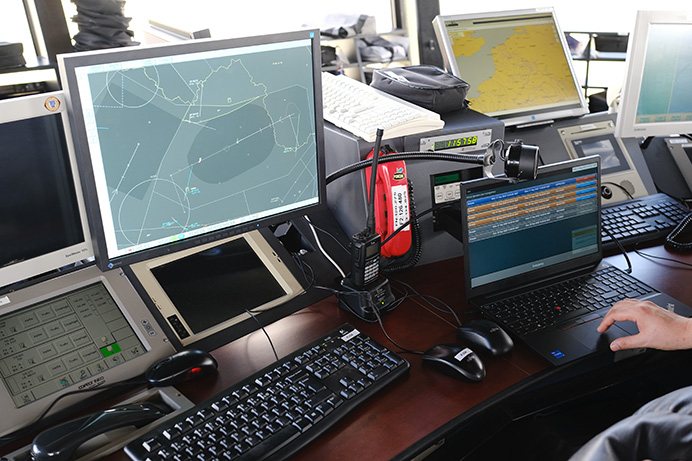In autumn 2022, French partners in the SESAR U-space AURA project completed a series of tests on a solution aimed at enabling interactions between systems managing drone and conventional air traffic (ATM). The partners confirmed that system-wide information management has the potential to provide a standardised interface between U-space and ATM systems.
Coordinated by Indra, the AURA (PJ.34) project aims to integrate the management of the very low-level airspace (VLL) or U-space as it is also known, with traditional air traffic management systems. The goal is to enable seamless operations between U-space and ATM. The project focuses on designing, implementing, and validating, technologies enabled by system-wide information management that can connect both air traffic control tools and U-space service providers (USSPs) systems.
The French testing was led by DSNA (France ANSP) in partnership with Thales, and took place at Lille Airport from 19 to 22 September. DSNA staff with a wide variety of expertise (i.e. technical, control tower, safety) and remote pilots tested different use cases in a live operational environment, validating messages formats, communication protocols, and the integration of these into existing systems, both in the control tower, in ATM backbone servers, and at Thales’ premises. The exercise allowed the demonstration of real drone flights within a sandbox U-space airspace inside controlled airspace. The coverage of all the uses cases and the systems’ interconnection allowed for a smooth delivery of U-space services by the USSP to the drone operator, and the timely involvement of the ANSP in each relevant phase, i.e. flight authorisation (strategic and tactical), cancellations, conformity losses, dynamic airspace reconfiguration have been performed successfully.
The partners confirmed that all the tools (tracking add-on and flight plan registration for the drone operator, USSP system, DSNA collaborative interface for strategic and tactical phases) met the requirements set by the project and showed that the SWIM architecture is well suited to this collaborative interface. It is already envisaged as an acceptable means for ensuring compliance for other drone and U-space related services (UAS geographical zones) and is expected to become a de facto architectural standard for many interfaces between ATM and other systems.
AURA PJ34 benefited from 8 other European clusters’ experimentations that strive for technological development and assessment and will capitalise on the SWIM architecture elaborated, thus contributing to the implementation of standards fostering the future U-space interoperability.
This initiative is funded by the Horizon 2020 programme and SESAR Joint Undertaking (Grant agreement 101017521) involving 22 partners and coordinated by Indra.

